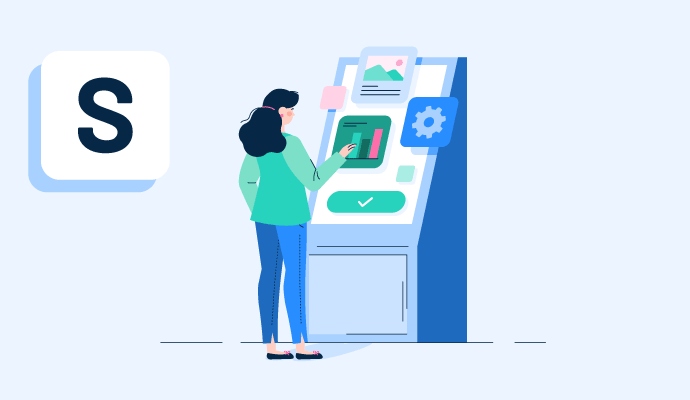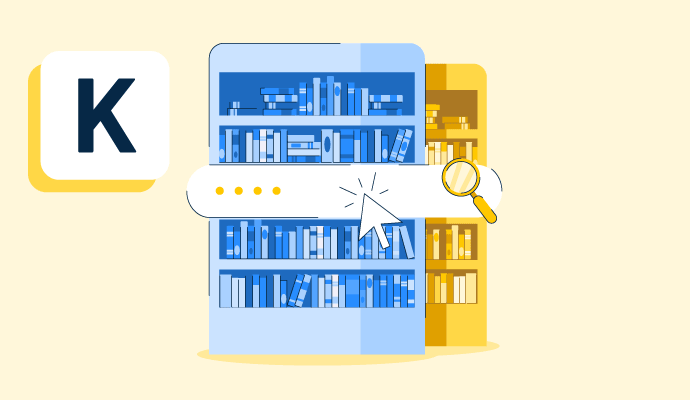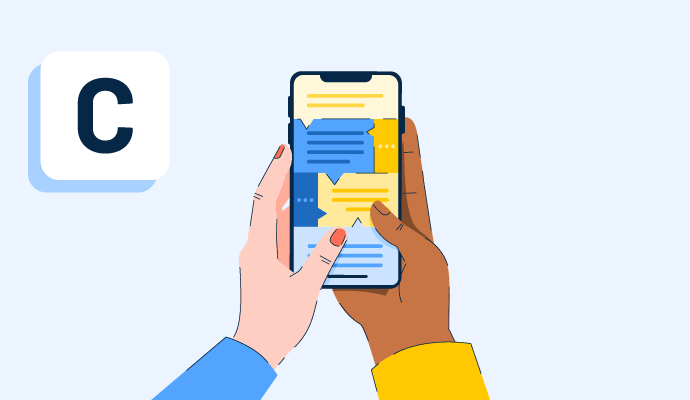Customer Self-Service Software Resources
Glossary Terms, Discussions, and Reports to expand your knowledge on Customer Self-Service Software
Resource pages are designed to give you a cross-section of information we have on specific categories. You'll find feature definitions, discussions from users like you, and reports from industry data.
Customer Self-Service Software Glossary Terms
Customer Self-Service Software Discussions
0
Question on: Zoho Desk
How many lite users can be added on zoho desk?Hi Yuktha, Light agents are available as an add-on for all other editions. You can add up to 50 light agents for free on the Enterprise edition. For more details, check out this - https://help.zoho.com/portal/en/kb/desk/for-administrators/user-access-and-security/articles/adding-users-as-light-agents
Hello everyone, are you new to FOREX trade or Cryptocurrency trade binary options trade or you are looking for an expert to trade and manage your account for you or Do you have funds you wish to withdraw from your binary broker? or you are having problems with the of your funds and you don't know how to go about it. kindly get back me on Email: ashleyphiliprecovery. @ gmail . Com and i will guide you on how to get back your funds in an interval of one weeks.
Telegram @Ashleyphiliprecovery1
0
Question on: Zoho Desk
How is Messagebird integration with Zoho DeskHi, Would love to explore messagebird app to integrate whatsapp messages as a Ticket, responding on whatsapp via Zoho Desk to incoming queries.
With MessageBird for Zoho Desk you can receive tickets from Zoho Desk in the form of messages from users. You can reply to the customers right from Zoho Desk, and they are delivered as messages to the user. For more details, check out - https://marketplace.zoho.com/app/desk/messagebird-desk-integration
If you have ever lost money through Lottery, Compensation, Binary Options, Inheritance Cryptocurrency or Forex.
Or your’e also facing some challenges of withdrawals or your broker manager is always asking you to make more deposit before you could place a withdrawals from your account or you traded and lost your funds without any reason or maybe you noticed that your broker manager manipulated your funds or you have lost your bitcoins you can report to Jeff silbert a specialist who helps to recover funds from any company legitimate or not legitimate I lost about 120k to scammers with the help of gavin ray I got back my funds in full.
Kindly contact them through this Email Address : jeffsilbert55@gmail.com.
Mr Morris Gray a is Certified and Trusted Recovery Agent
Y’all email MorrisGray830 @ Gmail dot com
Or WhatsApp: +1 (607) 698-0239,
After loosing A lot, to an unregulated broker platform, I saw testimonials about Mr Morris Gray.
So I sent him a dm, and also sent him all he needed for the recovery. After 72hours of him working.
I was called by the bank confirming the payments in my account, Quick satisfaction on every successful withdrawal with him, you can reach him quickly on WhatsApp via : +1 (607) 698-0239.!!!
0
Question on: WalkMe
What is the one greatest solution you have used WalkMe for?What issue have you used WalkMe for that you were unable to use another platform to solve? How has it helped you optimize the user experience of your application?
Our first solution using WalkMe as our Digital Adoption Platform (DAP) provided guidance, insights, engagement, and automation in one seamless package for a large-scale software roll-out.
*Guidance*
We first deployed DAP in 2017 to assist in the roll-out of a new Salesforce-based quotation tool for our nearly 20,000 North American employee- and partner-sales users. Our company was replacing a 25-year-old mainframe system, and required a fresh approach to speed our users to competency on the new system.
Largely replacing traditional training materials and methods, WalkMe's dynamic Walk-Thru guidance on-boarded new users quickly; provided an always up-to-date, streamlined, and universal training; and decreased task completion time by 50% because the training was being accomplished at the reality-moment in the flow of work. With DAP, this digital transformation was successful, de-risking the new digital landscape within 18 months across hundreds of business units and independent companies.
*Insights*
Although we de-risked the digital experience through DAP’s in-the-flow-of-work guidance and on-demand training, we discovered that - even after 18 months - there were many users, but very few adopters. While use of the new quotation system brought greater efficiencies to the newly-tech-empowered population, despite large roll-out campaigns, our users were slow to embrace all of the features and functionality this powerful system had to offer. Using WalkMe’s Insights, the we discovered two reasons why this was happening:
#1: Users did not contextualize the laundry lists of updates and new features pop-ups were exposing them to (demonstration pictures and videos represented features that were not part of their reality at that moment), and
#2: Users did not have the time or patience to keep learning new things (the pain of learning new places to click outweighed the incremental benefit of using the new features).
Because of WalkMe Insights, for the first time in our training experience, we able to measure the success of training in real-time and make data-driven decisions to improve user adoption.
With this in mind, we implemented a two-prong strategy for our DAP-based learning that stopped measuring success based on artifact views and began measuring based on feature usage. In other words, being tech-empowered became the benchmark of success, rather than simply producing training materials. To accomplish this goal, users needed to be engaged appropriately and the system needed greater automation.
*Engagement*
The first part of the strategy answered the lack of contextualization by addressing new features at the users’ “reality-moment” - the point of work. While DAP could deploy a number of training and marketing resources at any point in the users’ journey, calls to action were ineffective when away from the moment the user urgently needed the knowledge.
For example, the day after a monthly system update was released, a pop-up would appear espousing the amazing benefits of the newly-created features for all users logging into the system. The users’ interaction with these brilliant pieces of information was consistent: they would close the pop-up without reading it.
In fact, only 2% of users would take the time to click the pop-up to find out about the updates teased about on the screen. This information - much like reading a book or viewing a PDF - was out of context of users’ reality. Yes, users felt de-risked as they knew where to go for help, but their time at that moment was far too valuable to personalize and contextualize these representations of reality. we needed to present the information to the users when the training was immediately valuable - when the training could immediately be utilized in their reality.
The solution was to deploy update and reminder messages targeted specifically when the users need them. Looking at the system release notes prior to an update’s deployment, we now identify specific screens and user actions (clicks or views) that would trigger the need for the user to be updated on new functionality. Through our DAP’s segmentation capabilities, we tailor all learning to be available at the specific moment the user needs it, causing the artifact open rate to jump from 2% of all users to 94% of the users in need, doubling adoption of new features. Surfacing need-to-know information at the point of work allows our users to immediately contextualize the value of the information being presented as it is now their reality.
*Automation*
The second part of our strategy built on the first’s delivery of “reality-moment” value. We addressed the pointlessness of users learning more, non-value-added clicks to embrace new features by eliminating the learning curve through automation.
Fully committed to not just reducing the learning curve, but dismissing it, we went on a mission to eliminate all the “empty-clicks” needed to accomplish business functions but had no intrinsic value. As our team lead stated,
“I want users to know more about their actual job, and training on the location of each of the five clicks on a Salesforce screen to complete an out-of-office notification has zero positive impact to the company. We started taking hard looks at our training and asking ourselves, ‘Why are we wanting users to memorize specific technology nuances rather than giving them time and tools to focus on their customers?’ Empty clicks add no value, so we are now focused on automating non-value-added system clicks so our users’ experience is one that just works.”
Examples of our use of DAP's no-code automation include:
-Reducing the manual steps needed to create a necessary list view for all Sales users in Salesforce went from 74 clicks down to 3
-Saving over 244 hours a month by automatically pasting job data from one part of the screen into the discussions field
-Automatically clicking the "Done" button on several screens that save an average of $11,700 per month in employee time gained
Beyond operational efficiencies, DAP automation like the ones listed above allow Learning and Development activities to move system training beyond "remember to click this button" to "this is how your system supports your job functions."
Other tools we tested were too rudimentary for our application or delivered the learning experience in an external platform. We use WalkMe for In-App, Customer facing training on a complex application. We also enabled a monetized Certification path using the TeachMe add on.
Our training was transformed from location specific, in person sessions to a scalable, autonomous eLearning experience that's accessible in the flow of work, 24/7, with no additional logins.
We replaced Cornerstone LMS with TeachMe by WalkMe.
Customer Self-Service Software Reports
Mid-Market Grid® Report for Customer Self-Service
Winter 2025
G2 Report: Grid® Report
Grid® Report for Customer Self-Service
Winter 2025
G2 Report: Grid® Report
Enterprise Grid® Report for Customer Self-Service
Winter 2025
G2 Report: Grid® Report
Momentum Grid® Report for Customer Self-Service
Winter 2025
G2 Report: Momentum Grid® Report
Small-Business Grid® Report for Customer Self-Service
Winter 2025
G2 Report: Grid® Report
Enterprise Grid® Report for Customer Self-Service
Fall 2024
G2 Report: Grid® Report
Small-Business Grid® Report for Customer Self-Service
Fall 2024
G2 Report: Grid® Report
Mid-Market Grid® Report for Customer Self-Service
Fall 2024
G2 Report: Grid® Report
Grid® Report for Customer Self-Service
Fall 2024
G2 Report: Grid® Report
Momentum Grid® Report for Customer Self-Service
Fall 2024
G2 Report: Momentum Grid® Report


